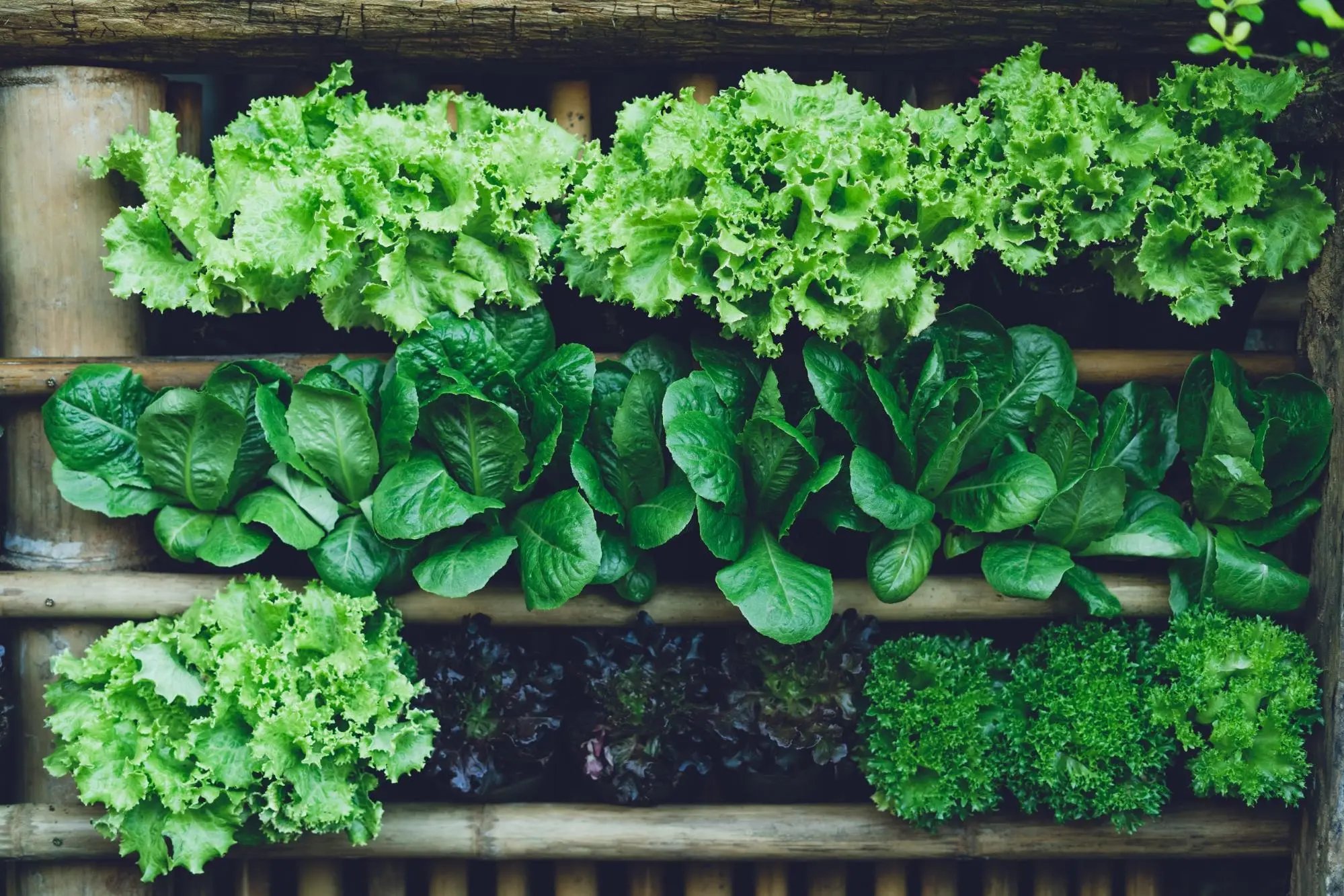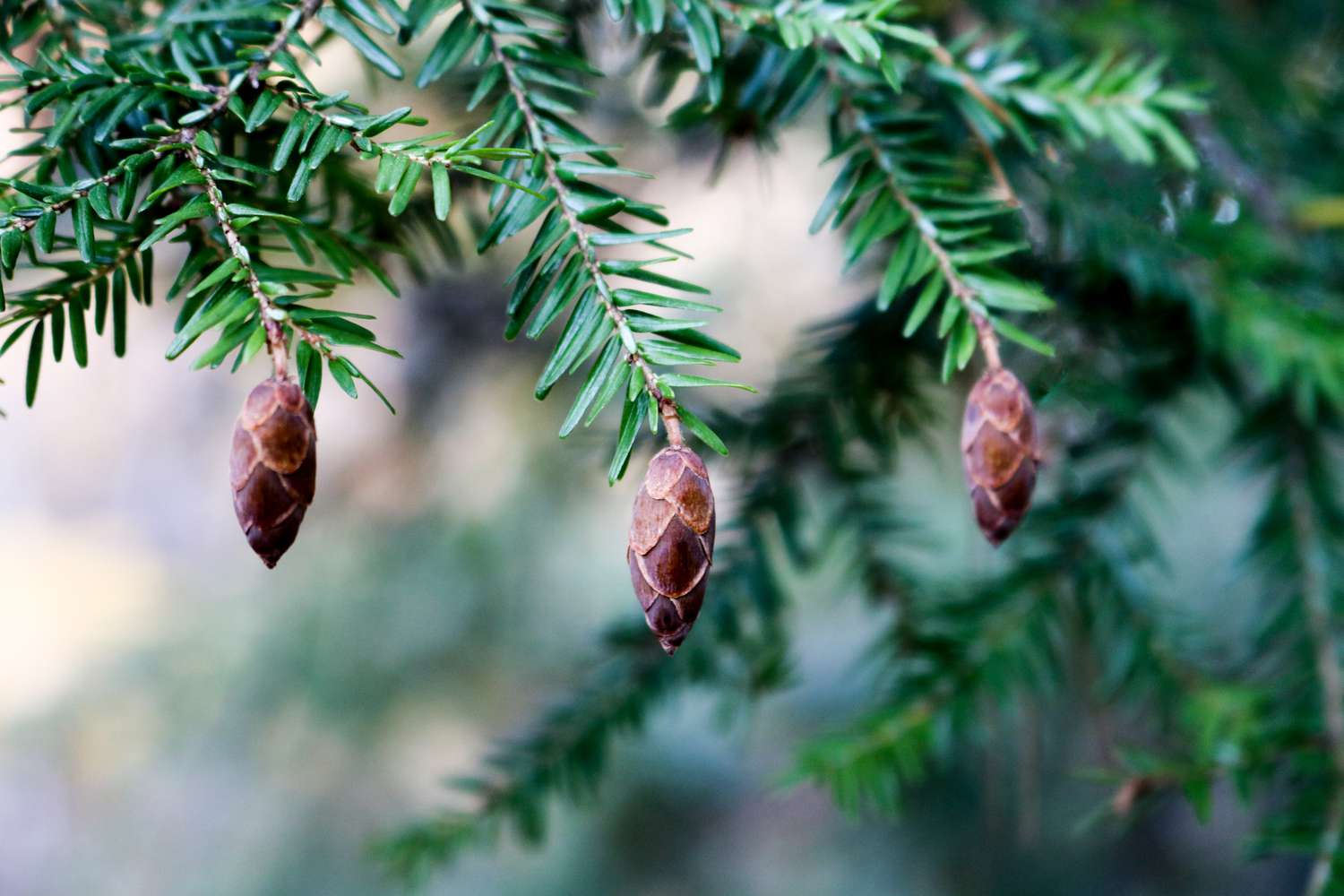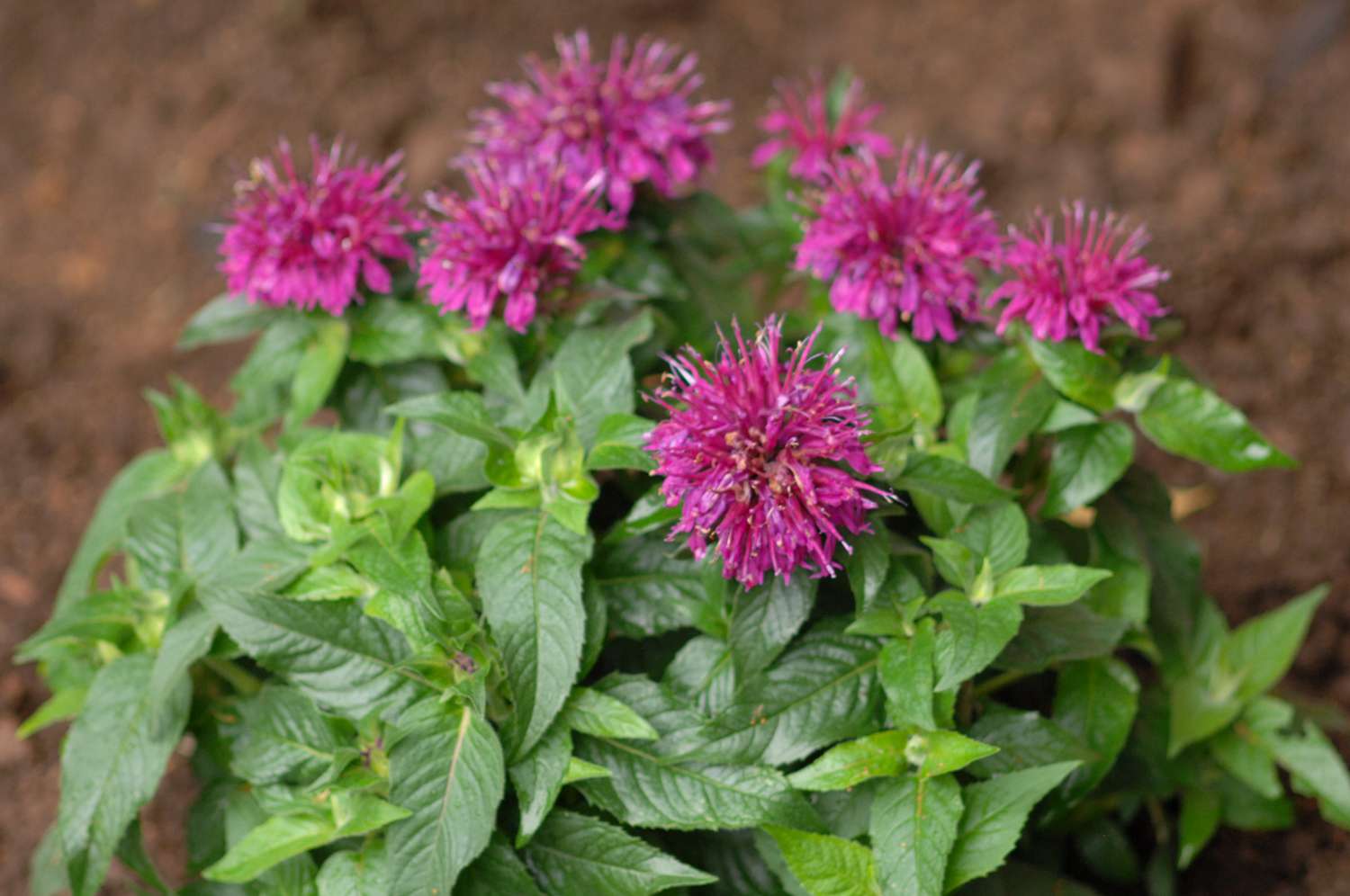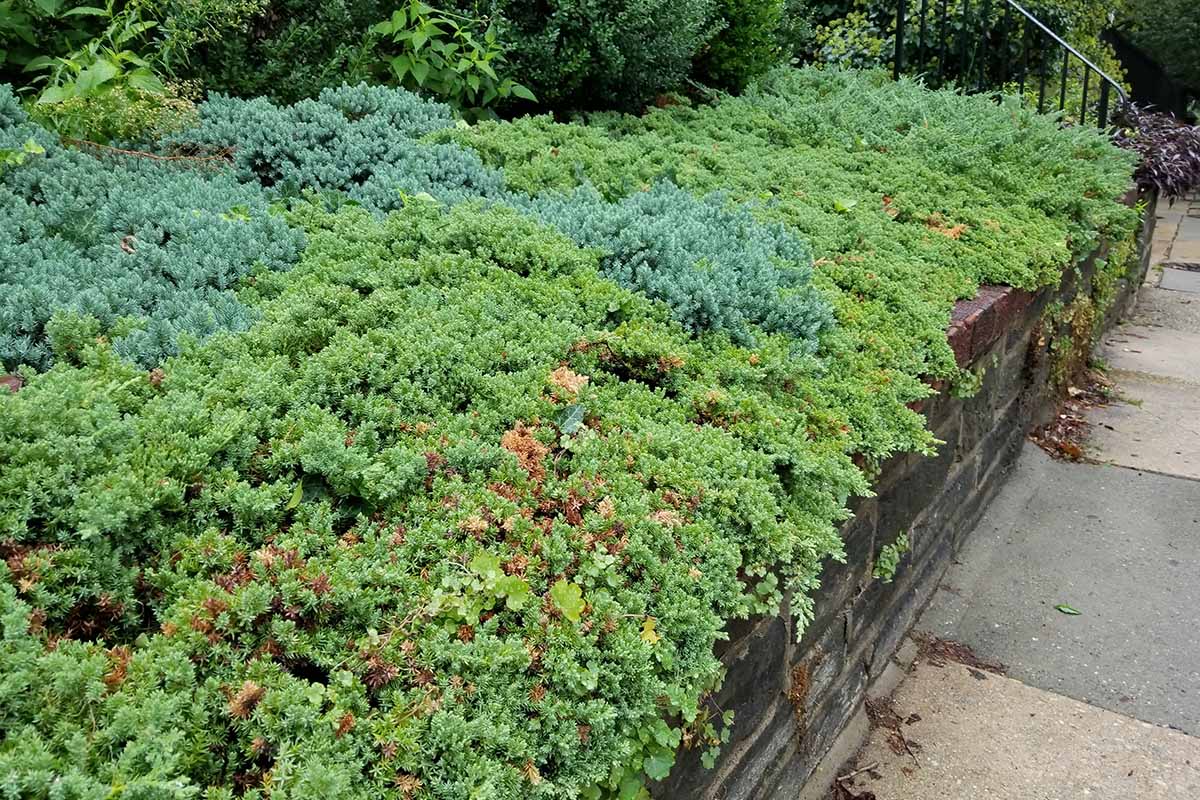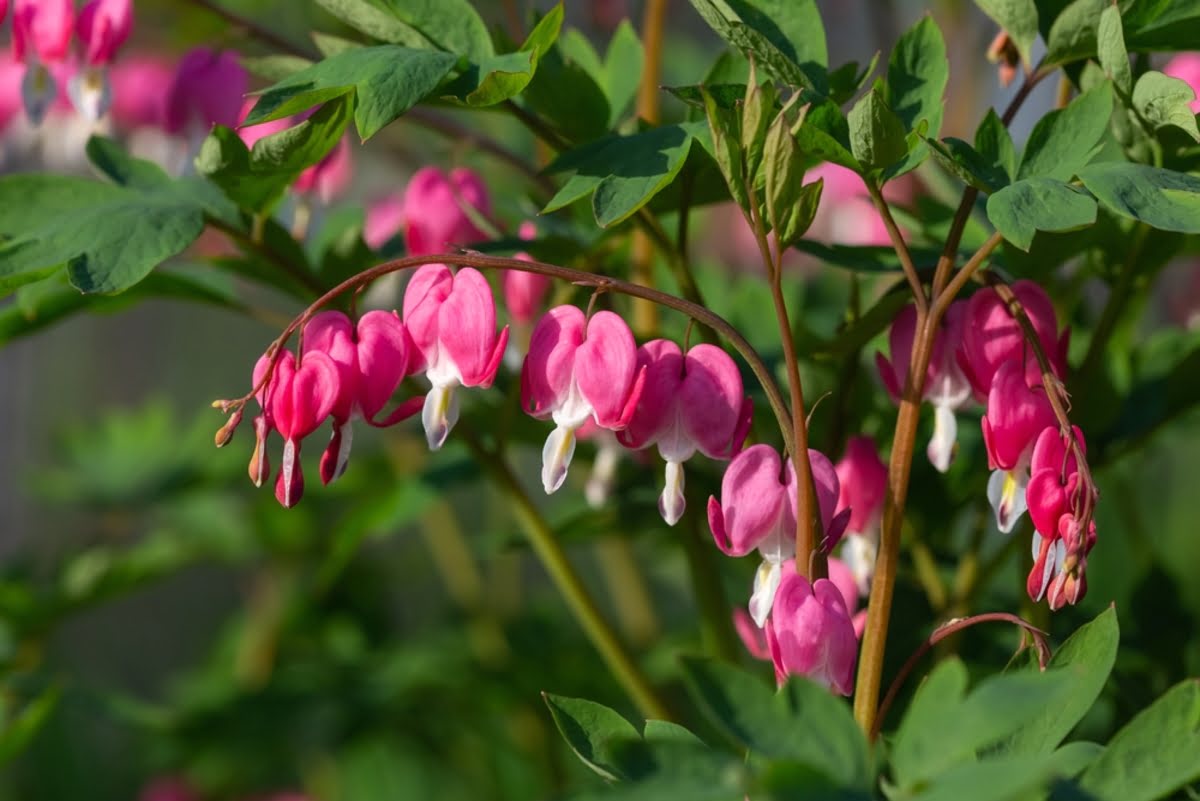Home>Types of Gardening>Ornamental Gardening>What Evergreen Shrubs Grow In Shade
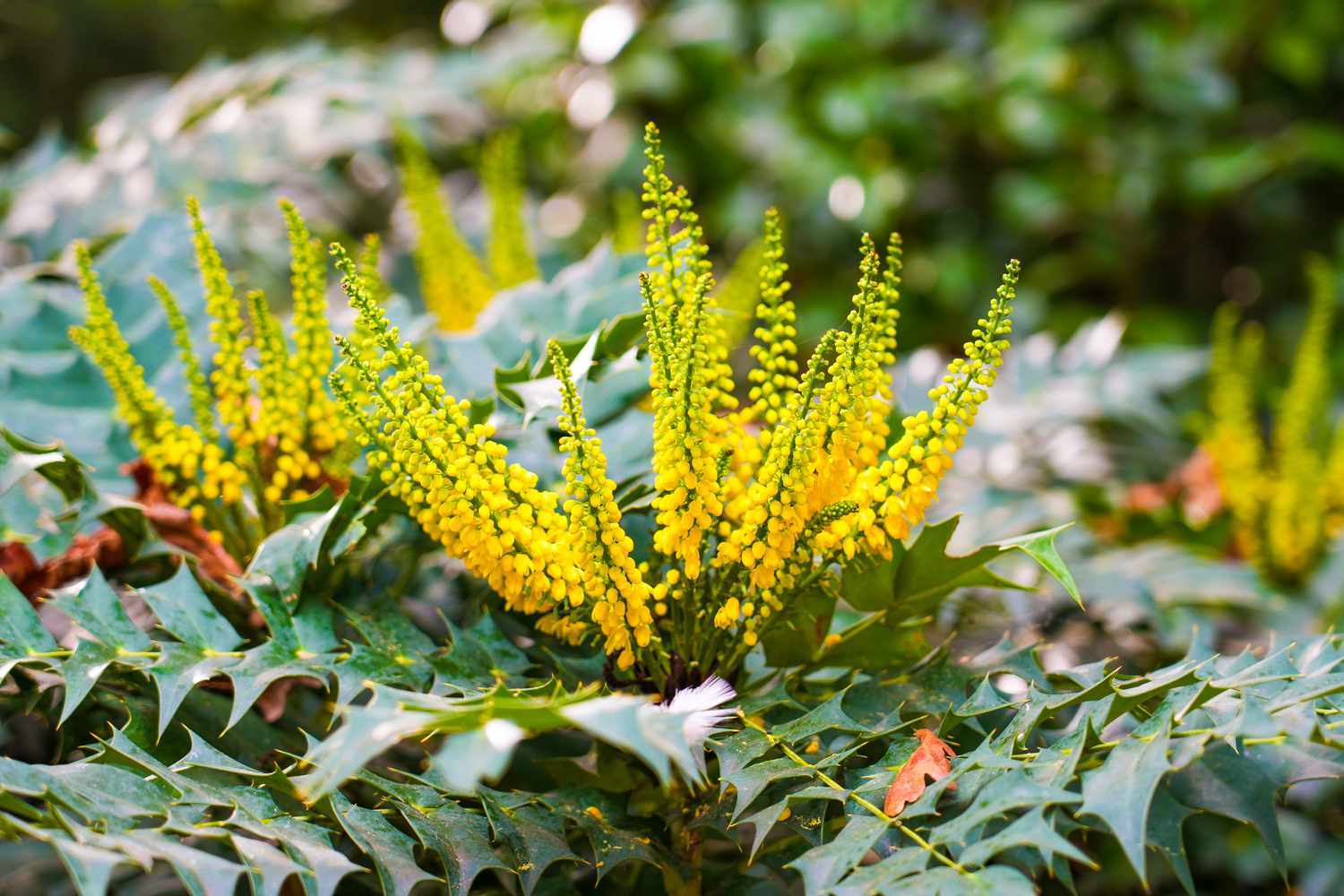

Ornamental Gardening
What Evergreen Shrubs Grow In Shade
Modified: January 22, 2024
Discover a variety of gorgeous evergreen shrubs that thrive in shaded areas for your ornamental gardening needs. Create a vibrant and lush garden even in low-light spaces.
(Many of the links in this article redirect to a specific reviewed product. Your purchase of these products through affiliate links helps to generate commission for Chicagolandgardening.com, at no extra cost. Learn more)
Table of Contents
Introduction
Welcome to the world of ornamental gardening! If you have a shady corner in your garden and are wondering which plants to choose, you’ve come to the right place. In this article, we will discuss a variety of evergreen shrubs that thrive in shade and add beauty to your outdoor space throughout the year.
Gardening in shaded areas can be a challenge, as sunlight is vital for most plants’ growth and development. However, with the right selection of shade-tolerant evergreen shrubs, you can transform even the darkest corners of your garden into lush, beautiful retreats.
Whether you have large, towering trees that create dense shade or a partially shaded area, evergreen shrubs are an excellent choice for bringing color, texture, and year-round interest to your garden. These versatile plants not only provide greenery throughout the year but also act as a backdrop for other plants and create a sense of depth and structure in your garden.
When selecting evergreen shrubs for shade, it’s essential to consider a few factors. Understanding the specific conditions of your shady area will help you choose the right plants and ensure their success. Factors such as the amount of shade, soil type, moisture levels, and hardiness zone should all be taken into account.
In the following sections, we will explore some popular evergreen shrubs that thrive in shade. From vibrant flowers to unique foliage, these plants offer a range of colors and textures to suit any garden style. We will also provide some tips for successfully growing and maintaining these shrubs in shaded areas.
So, let’s dive into the world of shade gardening and explore the beautiful and diverse selection of evergreen shrubs that can transform your shaded garden into a captivating oasis.
Understanding Shade Gardening
Shade gardening refers to the practice of growing plants in areas where direct sunlight is limited. While many plants thrive in full sun, there are a variety of shade-tolerant options that can transform even the darkest corners of your garden into lush and vibrant spaces.
Understanding the different types of shade is crucial for successful shade gardening. There are three main categories of shade: light shade, partial shade, and deep shade. Light shade refers to areas where sunlight is filtered through trees or structures, providing dappled light throughout the day. Partial shade includes areas that receive a few hours of direct sunlight and then remain shaded for the rest of the day. Deep shade indicates areas that receive little to no direct sunlight.
When selecting plants for shade, it’s important to consider the specific conditions of your shaded area. Shade-tolerant plants have adapted to thrive in low light conditions and require less sunlight compared to sun-loving plants. They often have larger leaves to maximize light absorption and may have lighter colored foliage to reflect available light.
In addition to light conditions, soil type and moisture levels are also significant factors to consider when planning a shade garden. Some shade-tolerant plants prefer moist soil, while others can tolerate drier conditions. It’s important to assess the soil drainage and adjust it accordingly to ensure the health and vitality of your plants.
Another aspect to consider is the hardiness zone of your region. Different plants have different temperature and climate requirements, so it’s essential to choose plants that are suitable for your specific zone. Check the hardiness rating of the plants you are considering and ensure they can withstand the lowest temperatures experienced in your area.
Shade gardening offers a unique opportunity to create a tranquil and cool retreat in your garden. By understanding the types of shade, considering soil conditions, and selecting plants suitable for your climate, you can successfully create a beautiful and thriving shade garden.
Factors to Consider When Choosing Evergreen Shrubs for Shade
Choosing the right evergreen shrubs for shade requires careful consideration of several important factors. By taking into account the following factors, you can ensure that the selected plants will thrive in your shaded garden:
- Light Conditions: Assess the specific type of shade in your garden, whether it is light shade, partial shade, or deep shade. Different evergreen shrubs have varying degrees of shade tolerance, and selecting plants that match the light conditions will promote their healthy growth.
- Growth Habit: Consider the growth habit of the shrub. Some evergreen shrubs grow tall and upright, while others have a spreading or cascading form. Choose plants with growth habits that complement the space and fit well into your overall garden design.
- Foliage: Examine the foliage characteristics, including color, texture, and density. Evergreen shrubs with interesting foliage can provide year-round visual interest in your garden. Look for plants with variegated leaves, unique textures, or attractive shades of green that will add depth and richness to your shaded space.
- Flowers and Berries: Consider whether you want your evergreen shrubs to produce flowers or berries. Some shrubs offer beautiful blooms in various colors and shapes, while others produce attractive berries that can add visual interest and provide food for wildlife.
- Soil and Moisture: Assess the soil type and moisture levels in your shaded area. Determine whether the soil is well-draining or if it tends to retain moisture. This will help you choose evergreen shrubs that are suitable for your soil conditions and will thrive without excessive watering or drainage issues.
- Hardiness: Check the hardiness rating of the evergreen shrubs you are considering. Make sure they are suitable for your specific climate and can withstand the lowest temperatures in your region. Choosing plants that are hardy in your zone will increase their chances of survival and longevity.
By considering these important factors, you can narrow down your choices and select evergreen shrubs that are well-suited for the shade conditions in your garden. Remember to also consider your personal preferences regarding growth habit, foliage, and flowering attributes, as these will contribute to the overall visual appeal of your shaded space.
Popular Evergreen Shrubs for Shade
There is a wide range of evergreen shrubs that are well-suited for shade conditions. These plants not only provide year-round foliage but also bring beauty and texture to your shaded garden. Here are some popular evergreen shrubs for shade:
- Rhododendron: Known for their spectacular clusters of flowers, rhododendrons thrive in partially shaded areas. They come in a variety of colors and sizes, adding vibrancy and beauty to your shaded garden.
- Mountain Laurel: Mountain laurel is a native shrub known for its elegant, showy flowers. With its glossy evergreen leaves and abundant blooms, it adds a touch of elegance to shady areas.
- Camellia: Camellias are prized for their stunning blooms in various shades of pink, red, white, and even striped. These evergreen shrubs can thrive in partial shade and add a touch of elegance to any garden.
- Holly: Holly shrubs are not only known for their glossy evergreen foliage but also for their vibrant berries. They add year-round interest to shaded areas and provide a pop of color during the winter months.
- Boxwood: Boxwoods are versatile evergreen shrubs that can thrive in both sun and shade. They provide a classic and formal look with their compact growth habit and small, dense leaves.
- Mahonia: Mahonia, also known as Oregon grape, is a shade-loving shrub with spiky leaves and clusters of yellow flowers. It adds interest and texture to shaded areas and attracts birds with its edible berries.
- Yew: Yews are hardy evergreen shrubs that can tolerate a range of light conditions, including shade. They have dark green foliage and can be pruned into various shapes, making them an excellent choice for formal gardens or hedging.
- Japanese Pieris: Japanese Pieris is an elegant evergreen shrub with drooping clusters of white or pink flowers. Its new foliage emerges as vibrant red, adding a striking contrast to the shade garden.
- Daphne: Daphne is a fragrant evergreen shrub that thrives in partial shade. It produces clusters of fragrant flowers in various shades of pink, white, or purple, adding both beauty and fragrance to your garden.
- Oregon Grape: Oregon grape is a hardy evergreen shrub that features spiky leaves and clusters of yellow flowers. It is tolerant of shade and can provide year-round interest with its bright purple berries.
These evergreen shrubs offer a variety of colors, textures, and forms to suit any garden style. Whether you want vibrant flowers, attractive foliage, or wildlife-friendly berries, there is sure to be an evergreen shrub that meets your preferences and thrives in the shady areas of your garden.
Rhododendron
Rhododendrons are renowned for their stunning clusters of flowers and are a popular choice for shaded gardens. These evergreen shrubs come in a wide range of colors, from soft pinks and vibrant reds to pure whites and mesmerizing purples. Rhododendrons thrive in partially shaded areas, making them a perfect choice for adding a burst of color to your shaded garden.
With their lush, broad leaves, rhododendrons provide year-round foliage that adds texture and depth to your garden. The dense clusters of flowers that adorn rhododendrons in the spring create a spectacular display and attract bees and butterflies, enhancing the biodiversity of your garden.
When planting rhododendrons, it’s important to provide them with well-draining soil that is rich in organic matter. These shrubs prefer moist soil but can suffer from root rot if the soil is too wet. Mulching around the base of the plant can help retain moisture and suppress weeds.
Rhododendrons thrive in acidic soil, so it’s essential to test and amend the soil accordingly. If your soil is not naturally acidic, you can lower the pH level by adding organic matter, such as peat moss or compost specially formulated for acid-loving plants.
While rhododendrons are generally low-maintenance, they do benefit from regular pruning to maintain their size and shape. Pruning should be done after the shrub has finished blooming, as they set their flower buds for the following year shortly after. Pruning also helps promote air circulation and prevents overcrowding, which can lead to diseases.
In colder climates, it’s important to choose rhododendron varieties that are hardy and can withstand freezing temperatures. Consult your local nursery or gardening expert for advice on the best varieties for your region.
Overall, rhododendrons are a stunning choice for adding vibrant color and lush foliage to your shaded garden. With proper care and attention, these evergreen shrubs can be star performers, providing a visual feast and attracting pollinators to your outdoor haven.
Mountain Laurel
Mountain Laurel (Kalmia latifolia) is a native evergreen shrub that is commonly found in wooded areas and is highly valued for its spectacular blooms. This shade-loving shrub adds elegance and beauty to any garden with its showy clusters of flowers and glossy green leaves.
One of the standout features of mountain laurel is its stunning flowers. The blooms, which appear in late spring to early summer, come in a variety of colors, including shades of pink, white, and burgundy. The unique shape and intricate patterns of the flowers add a touch of whimsy to the shaded garden.
In addition to its beautiful flowers, mountain laurel has glossy, leathery leaves that provide year-round interest. The foliage is an attractive deep green, and some varieties have leaves with a reddish tinge, adding even more visual appeal.
Mountain laurel prefers acidic soil and thrives in moist, well-draining conditions. It can thrive in both partial shade and full shade, making it an excellent choice for those darker areas of your garden where other plants may struggle.
When establishing mountain laurel in your garden, it’s important to provide adequate water during dry spells and to mulch around the base of the plant to help retain moisture. However, be careful not to overwater, as this plant prefers moist, but not waterlogged, soil.
Pruning mountain laurel is generally not necessary, as it has a naturally attractive growth habit. However, if desired, light pruning can be done after flowering to maintain a neat and compact shape.
It’s important to note that all parts of the mountain laurel plant are toxic if ingested by humans or animals, so it should be planted away from areas where children and pets may play.
Overall, mountain laurel is a stunning evergreen shrub that adds a touch of grace and beauty to shaded areas. With its beautiful blooms and glossy foliage, it can be a focal point or a supporting character in your garden, depending on how it’s incorporated into your landscape.
Camellia
Camellias are classic evergreen shrubs known for their striking, showy flowers and glossy, dark green foliage. These shade-loving plants bring elegance and beauty to any garden while providing year-round interest.
Camellias are available in a wide range of cultivars, offering a variety of flower colors, sizes, and forms. The blooms can be found in shades of white, pink, red, and even bi-colors, providing options to suit any color scheme or garden style. The petals can be single, semi-double, or fully double, adding further diversity to the range of available cultivars.
One of the remarkable features of camellias is their flowering season. Depending on the variety, camellias can bloom in late fall, winter, or early spring, providing a burst of color when other plants may be dormant. This makes them an excellent choice for bringing bright, vibrant blooms to shady areas and adding a touch of cheer to those colder months.
Camellias prefer acidic soil and thrive in partial shade, making them ideal for planting under the canopy of trees or in areas with dappled sunlight. They also require well-draining soil and regular watering to keep the soil consistently moist but not waterlogged.
It’s important to note that camellias are shallow-rooted plants, so mulching around the base of the plant is essential to help retain soil moisture and keep the roots cool. Organic mulch, such as bark chips or compost, works well for camellias.
Pruning camellias is typically done after they have finished flowering. This allows you to shape the shrub, remove dead or diseased branches, and promote better airflow and light penetration. Light pruning is generally all that is required to maintain the desired shape and size of the plant.
Camellias are relatively low-maintenance plants, but they may occasionally be susceptible to pests and diseases such as scale insects, aphids, or root rot. Regular inspection and appropriate treatment, if necessary, can help keep these issues at bay and ensure the health of your camellia shrubs.
With their stunning blooms and evergreen foliage, camellias bring beauty, elegance, and a touch of luxury to shaded gardens. Whether used as specimen plants, hedges, or container plants, camellias are a timeless addition that will delight any gardening enthusiast.
Holly
Holly (Ilex) is a classic evergreen shrub that is well-known for its glossy, spiky leaves and vibrant berries. With its rich green foliage and festive red berries, holly adds year-round interest and a pop of color to shaded gardens.
One of the key attractions of holly is its berries, which appear in the fall and persist throughout the winter months. The bright red berries stand out against the dark green foliage, providing a cheerful and festive touch to the garden during the colder seasons.
While holly is typically associated with the holiday season, its beauty and charm go beyond just a seasonal decoration. The glossy, leathery leaves of holly provide visual interest year-round, making it an excellent choice for creating a backdrop or focal point in shaded areas.
There are various holly species and cultivars available, offering a range of sizes, shapes, and growth habits to suit different garden styles and preferences. Some holly shrubs have spiny leaves, while others have smooth-edged leaves. The berries can also come in different colors, including yellow, orange, and even black.
Holly shrubs prefer acidic to slightly alkaline soil and can tolerate a range of moisture conditions, from well-draining soil to slightly moist conditions. It’s important to water the young holly plants regularly until they are well-established, and then provide supplemental watering during dry periods.
Pruning holly is typically done in the late winter or early spring when the shrub is dormant. Light pruning can help maintain the desired shape and size of the plant. Be cautious while handling holly plants, as the spines on the leaves can be sharp.
When selecting a holly cultivar, it’s important to consider cross-pollination requirements if you want the plant to produce berries. Some holly varieties require both male and female plants to produce berries, while others are self-fertile. Consult local nurseries or gardening experts for advice on suitable holly cultivars for your region.
Overall, holly is a versatile and attractive evergreen shrub that thrives in shade. With its glossy foliage and eye-catching berries, holly adds beauty, texture, and a touch of festive charm to shaded gardens throughout the year.
Boxwood
Boxwood (Buxus) is a popular evergreen shrub known for its dense, compact growth habit and small, glossy leaves. This shade-tolerant shrub is highly versatile and can be used for various purposes in the garden, including hedging, topiaries, or as standalone specimens.
Boxwood’s neat and formal appearance makes it a favored choice for creating structured and elegant gardens. Its dense foliage provides a classic and timeless look, adding a touch of sophistication to any space. The small, oval-shaped leaves of boxwood are typically dark green, maintaining their color throughout the year.
One of the notable characteristics of boxwood is its slow growth rate, making it easy to maintain and shape into desired forms. Whether you prefer perfectly manicured hedges or intricate topiaries, boxwood can be pruned and shaped to suit your vision.
Boxwood thrives in partial shade, making it a valuable asset for shaded areas that need year-round greenery. It is adaptable to a range of soil types, but it prefers well-draining soil rich in organic matter. Regular watering is essential during dry periods to keep the soil consistently moist.
When planting boxwood, it’s important to provide adequate spacing between plants to allow for air circulation and prevent overcrowding. This will help prevent the spread of diseases, such as boxwood blight, which can be a concern in some regions.
While boxwood is generally considered a low-maintenance shrub, it may require occasional pruning to maintain its shape and size. Light pruning can be done throughout the growing season, but heavier pruning is best done in late winter or early spring before new growth begins.
When used as hedges or borders, boxwood can provide structure and define garden spaces. It can also be combined with other shade-loving plants to create dynamic and visually appealing plantings. Boxwood’s versatility and timeless elegance make it a staple in many gardens, both formal and informal.
Overall, boxwood is a reliable and attractive evergreen shrub that thrives in shade. With its versatility, compact growth habit, and glossy foliage, boxwood adds a touch of class and refinement to shaded gardens, making it an excellent choice for those seeking a formal and polished aesthetic.
Mahonia
Mahonia, also known as Oregon grape, is an evergreen shrub that thrives in shade and brings unique beauty to the garden. With its spiky leaves, vibrant yellow flowers, and edible berries, Mahonia is a versatile and eye-catching addition to any shaded landscape.
One of the standout features of Mahonia is its striking foliage. The leaves are typically pinnate or holly-like, with spiky edges that add textural interest in the garden. Some varieties of Mahonia have leaves that change color throughout the year, offering a range of hues from green to purplish-bronze.
In the late winter or early spring, Mahonia produces clusters of bright yellow flowers that are highly fragrant. These flowers not only add a pop of color to the shade garden but also attract bees and other beneficial pollinators. The blooms are followed by dark blue, edible berries that provide late-season interest and serve as a food source for wildlife.
Mahonia prefers moist, well-draining soil but can adapt to a variety of soil conditions. It performs best in partial to full shade, making it a fantastic choice for those shadier areas that need a burst of color and texture. After becoming established, Mahonia is relatively drought-tolerant and requires minimal maintenance.
Pruning Mahonia is generally not necessary, but it can be done to shape the shrub or remove any damaged or crowded branches. It’s best to prune Mahonia after it has finished flowering to avoid cutting off potential blooms for the next season.
Wildlife enthusiasts will appreciate Mahonia for its ability to attract birds with its berries. The berries, while tart, can be used in jellies or jams and add an interesting flavor to culinary recipes.
Whether used as a specimen plant or incorporated into mixed borders, Mahonia adds visual interest, texture, and wildlife value to shaded gardens. Its unique foliage, fragrant flowers, and edible berries make Mahonia a standout choice for those seeking a distinctive and captivating addition to their landscape.
Yew
Yew (Taxus) is a versatile evergreen shrub that can thrive in shade and bring elegance and structure to the garden. With its dark green, needle-like foliage and ability to tolerate a range of light conditions, yew is a popular choice for creating hedges, screens, or standalone specimens.
One of the defining features of yew is its dense and compact growth habit. It has a columnar or pyramidal shape, making it an excellent choice for formal gardens or as a backdrop for other plants. Yew can be pruned and shaped to create formal hedges or topiaries, adding a touch of classic style to shaded areas.
Yew prefers partial shade but can tolerate full shade as well. It can adapt to various soil types, including well-draining soil or soils that are slightly acidic to slightly alkaline. Once established, yew is relatively drought-tolerant but benefits from supplemental watering during dry periods.
One of the advantages of yew is its slow growth rate, which means less maintenance in terms of pruning and shaping. However, light pruning can be done to maintain the desired size and shape of the shrub. It’s important to note that the foliage and seeds of yew are toxic if ingested, so caution should be exercised around children and pets.
In addition to its ornamental value, yew also has historical significance. Throughout history, yew has been associated with longevity and has been used in various cultural and religious traditions. Its dark green foliage and timeless appeal make it a symbol of endurance and strength.
Yew is a hardy shrub that can withstand cold temperatures, making it suitable for a variety of climates. It can also tolerate air pollution, making it a good choice for urban gardens or areas with poor air quality.
Whether used as a hedging plant or as an architectural feature in the garden, yew adds a touch of sophistication and elegance to shaded areas. Its dark green foliage and structured growth habit make it a versatile and attractive choice for those seeking a timeless and low-maintenance evergreen shrub.
Japanese Pieris
Japanese Pieris (Pieris japonica) is an elegant evergreen shrub that thrives in shade and adds a touch of beauty and grace to any garden. With its drooping clusters of white or pink flowers and vibrant new foliage, Japanese Pieris is a stunning addition to shaded landscapes.
The blossoms of Japanese Pieris emerge in early spring, creating a dazzling display of bell-shaped flowers. These flowers can be white or shades of pink and often dangle in delicate clusters, resembling cascading fairy bells. The blooms not only add visual interest but also attract pollinators, such as bees and butterflies, to your garden.
Another noteworthy feature of Japanese Pieris is its foliage. The new growth emerges as vibrant red or bronze, gradually maturing to glossy, dark green. This color transition provides an interesting contrast and adds depth to the plant’s overall appearance.
Japanese Pieris thrives in acidic soil and performs best in partially shaded areas. It prefers moist, well-draining soil but can tolerate drier conditions once established. Adding organic matter, such as peat moss or compost, can help improve soil acidity and provide nutrients for the plant’s growth.
Pruning Japanese Pieris is generally not necessary, as it naturally maintains a neat and compact shape. However, if desired, light pruning can be done after flowering to promote bushiness and remove any dead or damaged branches.
Japanese Pieris is generally low-maintenance, but it may benefit from occasional fertilization to support its growth and bloom production. Use a slow-release fertilizer specifically formulated for acid-loving plants, following the instructions on the packaging.
With its graceful blooms and evergreen foliage, Japanese Pieris adds a touch of elegance to shaded gardens. It can be used as a specimen plant, in mixed borders, or even as a container plant on patios or balconies. Japanese Pieris is sure to captivate with its enchanting flowers and bring a sense of tranquility to your shaded outdoor spaces.
Daphne
Daphne is an enchanting evergreen shrub known for its beautiful and fragrant flowers. These shade-loving plants add a touch of elegance and a delightful fragrance to any garden, making them a favorite among gardeners.
One of the standout features of Daphne is its captivating flowers. They come in a variety of shades, including pink, white, and purple, and emit a sweet and intoxicating fragrance. The blooms typically appear in late winter or early spring, providing an early burst of color and scent to the shaded garden.
In addition to their stunning flowers, Daphne shrubs have glossy, leathery leaves that provide year-round interest. The foliage is rich green and provides a lovely backdrop for the blooming flowers. Some species of Daphne also offer attractive colored stems for added visual appeal.
Daphne thrives in partial shade, making it an ideal choice for shaded areas where other plants may struggle. It prefers well-draining soil and requires consistent moisture to perform its best. Mulching around the base of the plant can help maintain soil moisture and suppress weeds.
When planting Daphne, it’s important to give it space to grow, as it can become bushy. Pruning, if required, should be done immediately after flowering, as Daphne sets its flower buds for the following year after blooming. Light pruning can help maintain a compact and attractive shape.
It’s worth noting that while Daphne is a beautiful addition to any garden, it can be somewhat challenging to grow. It is sensitive to extreme temperatures, wet feet, and root disturbance. Proper care and attention to its specific needs will help ensure its success.
Despite its demands, the reward of growing Daphne is well worth the effort. Its fragrant flowers and evergreen foliage create a sensory experience in the garden, enticing gardeners and visitors alike. Whether used as a specimen plant or in mixed borders, Daphne adds charm and elegance to shaded gardens and captivates with its alluring fragrance.
Oregon Grape
Oregon Grape (Mahonia aquifolium) is a versatile evergreen shrub that thrives in shade and offers a range of attractive features. From its spiky leaves to its clusters of vibrant yellow flowers and edible berries, Oregon Grape adds interest and beauty to any shaded garden.
The foliage of Oregon Grape is one of its distinguishing characteristics. The leaves are composed of leaflets that have sharp, spiky edges, resembling holly leaves. This adds texture and depth to the garden, particularly in areas where larger, broad-leaved plants may dominate.
In late spring to early summer, Oregon Grape produces clusters of sunny and fragrant yellow flowers. These blooms attract pollinators such as bees and butterflies, adding lively activity to the garden. After flowering, the plant develops dark purple berries that are edible and can be used in jams, jellies, or wine-making.
Oregon Grape thrives in shaded areas and can tolerate a wide range of soil types. It prefers well-draining soil and benefits from adding organic matter, such as compost, to improve soil fertility and structure. Once established, Oregon Grape is fairly drought-tolerant and requires minimal maintenance.
Pruning Oregon Grape is typically done in early spring before new growth appears. It’s best to remove any dead, damaged, or overcrowded stems to maintain a tidy appearance and promote better air circulation. Regular pruning also helps control the size and shape of the shrub.
Aside from its visual appeal, Oregon Grape has contributed to traditional medicinal practices. Its roots contain compounds that have been used to make herbal remedies for various ailments. It is important to note that harvesting and using plant materials for medicinal purposes should be done with caution and proper knowledge.
Overall, Oregon Grape is a versatile and visually appealing evergreen shrub that brings year-round interest to shaded gardens. With its spiky leaves, vibrant flowers, and edible berries, it offers a unique and valued presence in the garden. Whether used as a focal point or incorporated into mixed plantings, Oregon Grape is sure to capture attention and add a touch of natural beauty to any shaded landscape.
Tips for Growing Evergreen Shrubs in Shade
Growing evergreen shrubs in shade can be a rewarding experience when done correctly. Here are some essential tips to help you successfully cultivate and maintain shade-loving evergreen shrubs:
- Choose the Right Plants: Select evergreen shrubs that are specifically labeled as shade-tolerant or shade-loving. These plants are adapted to thrive in low light conditions and will be more successful in shaded areas.
- Assess the Light Conditions: Determine the level of shade in your garden, whether it’s light shade, partial shade, or deep shade. Understanding the specific light conditions will help you choose the appropriate plants and position them accordingly.
- Consider Soil and Moisture: Shade-loving evergreen shrubs often prefer moist, well-draining soil. It’s important to assess your soil type and make any necessary amendments to provide the optimal growing conditions. Mulching around the base of the plants can help retain moisture and regulate soil temperature.
- Planting and Spacing: Follow the recommended spacing guidelines for the specific evergreen shrubs you are planting. Restricting airflow and light can lead to poor growth and susceptibility to diseases. Proper spacing allows for adequate air circulation and prevents overcrowding.
- Watering: Monitor the moisture levels regularly, especially during dry spells. Water the plants deeply and thoroughly to encourage deep root growth. Avoid overwatering, as it can lead to root rot and other issues.
- Fertilization: Evergreen shrubs in shade may benefit from occasional fertilization to provide essential nutrients. Use a balanced organic fertilizer formulated for acid-loving plants and follow the manufacturer’s instructions for application rates and timing.
- Pruning and Maintenance: Regular pruning helps maintain the desired shape and size of the shrubs while also improving air circulation. Prune after flowering or during the dormant season, depending on the specific plant’s needs.
- Monitor for Pests and Diseases: Keep an eye out for common pests and diseases that may affect shade-loving evergreen shrubs. Early detection and appropriate treatment can help mitigate problems and keep the plants healthy.
- Protect from Harsh Environmental Conditions: Shield the evergreen shrubs from extreme temperatures, such as frost or intense heat, as they may be more susceptible to damage. Consider providing temporary shade or protection during extreme weather events.
- Observe and Learn: Pay attention to the unique needs and characteristics of each shade-loving evergreen shrub you grow. Observe how they respond to the specific conditions in your garden and make adjustments as necessary to ensure their health and vitality.
By following these tips and staying observant to the needs of your evergreen shrubs, you can create a thriving and beautiful shaded garden. Enjoy the year-round greenery, textural interest, and potential bursts of color that these shade-loving plants can bring to your outdoor oasis.
Conclusion
Evergreen shrubs are excellent choices for adding beauty, texture, and year-round interest to shaded gardens. By understanding the specific requirements of these shade-loving plants, you can create a lush and vibrant landscape even in areas with limited sunlight.
When selecting evergreen shrubs for shade, consider factors such as light conditions, growth habits, foliage characteristics, and soil preferences. Choose plants that are well-suited to your specific shade conditions and soil type to ensure their success and longevity.
Popular evergreen shrubs for shade include rhododendron, mountain laurel, camellia, holly, boxwood, mahonia, yew, Japanese Pieris, Daphne, and Oregon grape. These shrubs offer a wide range of colors, textures, and forms, allowing you to create a diverse and visually appealing shaded garden.
Proper care and maintenance are crucial for the healthy growth of shade-loving evergreen shrubs. Be diligent in watering, fertilizing, pruning, and monitoring for pests and diseases. Understanding each plant’s specific needs will help you create an optimal environment and ensure their long-term health and vitality.
Growing evergreen shrubs in shade requires patience and a keen eye for observation. Each shrub has its own unique requirements and characteristics, and learning to adapt and respond to them is key to successful gardening.
With the right selection of evergreen shrubs and proper care, you can transform your shaded garden into a refuge of beauty and tranquility. Whether you desire vibrant flowers, attractive foliage, or wildlife-friendly berries, these shade-loving plants offer a wide range of options to suit your preferences and create a captivating outdoor space.
Embrace the beauty of shade gardening, unleash your creativity, and enjoy the rewards of nurturing these exceptional evergreen shrubs. Let them transform your shaded garden into a sanctuary where lush greenery and captivating colors thrive, providing a soothing and invigorating atmosphere for you to enjoy for years to come.
